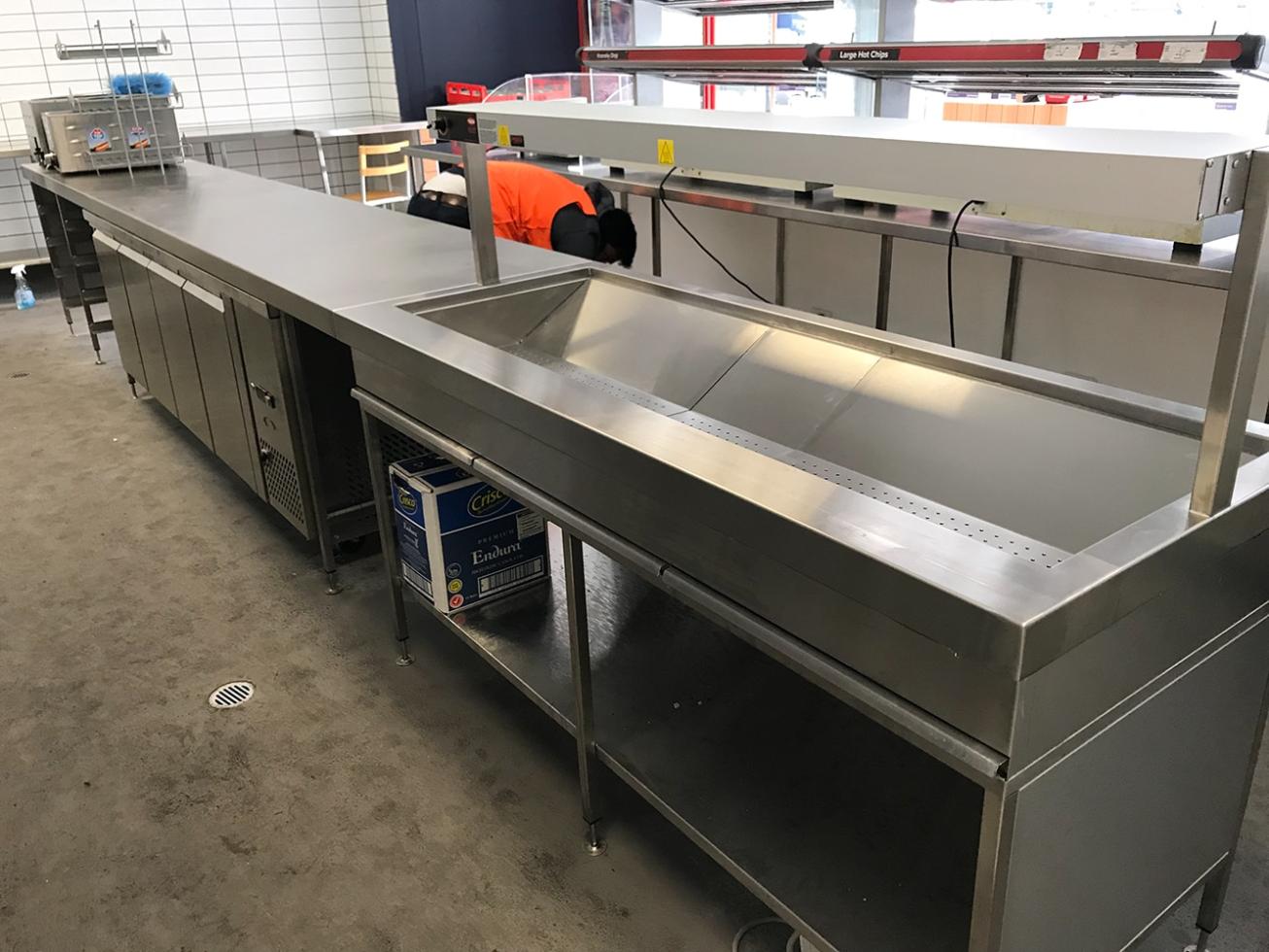Ensuring Food Safety and Customer Satisfaction: How to Properly Clean and Maintain Catering Equipment
In the catering industry, maintaining the cleanliness and proper maintenance of equipment is of paramount importance. Clean and well-maintained equipment not only ensures food safety and hygiene but also contributes to customer satisfaction and the overall success of a catering business.

I. Pre-Cleaning Procedures:
Pre-cleaning is the initial step in the cleaning process and plays a crucial role in removing food residue and debris from equipment surfaces.
- Scraping Off Food Particles: Use a spatula or scraper to remove any visible food particles from equipment surfaces.
- Rinsing with Warm Water: Rinse the equipment with warm water to loosen and remove any remaining food particles.
- Using a Degreaser or Mild Detergent: Apply a degreaser or mild detergent to the equipment surfaces and allow it to sit for a few minutes to break down grease and grime.
II. Cleaning Methods:
The choice of cleaning method depends on the type of equipment being cleaned.
A. Manual Cleaning:
- Selecting the Appropriate Cleaning Solution: Choose a cleaning solution that is suitable for the type of equipment and the type of food residue being cleaned.
- Using Appropriate Tools and Techniques: Use appropriate tools, such as brushes, sponges, and cloths, to clean the equipment surfaces. Scrub the surfaces gently to avoid damaging them.
- Rinsing Thoroughly: Rinse the equipment thoroughly with clean water to remove any remaining cleaning solution or food residue.
B. Mechanical Cleaning:
- Dishwashers: Use commercial dishwashers specifically designed for catering equipment. Ensure that the dishwasher is properly maintained and uses the appropriate detergents and sanitizers.
- Conveyor Belts: Use specialized conveyor belt cleaning systems to remove food residue and debris from conveyor belts.
- Ultrasonic Cleaners: Ultrasonic cleaners use high-frequency sound waves to create cavitation, which effectively removes dirt, grease, and other contaminants from equipment surfaces.
III. Maintenance And Inspection:
Regular maintenance and inspection of catering equipment are essential to ensure its proper functioning and longevity.
- Checking for Leaks, Cracks, and Damage: Regularly inspect equipment for any leaks, cracks, or damage. Address any issues promptly to prevent further problems.
- Lubricating Moving Parts: Lubricate moving parts according to the manufacturer's instructions to ensure smooth operation and prevent wear and tear.
- Calibrating Equipment: Calibrate equipment regularly to ensure accurate measurements and consistent performance.
- Replacing Worn-Out Parts: Replace worn-out or damaged parts promptly to maintain the equipment's functionality and safety.
IV. Sanitization And Disinfection:

Sanitization and disinfection are essential steps in the cleaning process to eliminate harmful bacteria and microorganisms from equipment surfaces.
A. Difference Between Cleaning, Sanitization, And Disinfection:
- Cleaning: Cleaning removes dirt, food residue, and other visible contaminants from surfaces.
- Sanitization: Sanitization reduces the number of microorganisms on surfaces to a safe level.
- Disinfection: Disinfection kills or inactivates microorganisms on surfaces.
B. Various Sanitization And Disinfection Methods:
1. Chemical Sanitizers:
- Chlorine: Chlorine is a widely used chemical sanitizer that is effective against a broad spectrum of microorganisms.
- Iodine: Iodine is another effective chemical sanitizer that is often used in foodservice establishments.
- Quaternary Ammonium Compounds (Quats): Quats are a group of chemical sanitizers that are commonly used in low-temperature applications.
2. Heat Sanitization:
- Steam Cleaning: Steam cleaning uses high-temperature steam to sanitize equipment surfaces.
- Hot Water Sanitization: Hot water sanitization involves submerging equipment in hot water (typically at or above 171°F) for a specified period of time.
3. Ultraviolet (UV) Light Disinfection:
- UV Light: UV light is a powerful disinfectant that can be used to sanitize equipment surfaces. UV light disinfection systems are becoming increasingly popular in foodservice establishments.
V. Safety Precautions:
It is crucial to follow safety protocols when cleaning and maintaining catering equipment to protect workers and ensure their safety.
- Wearing Protective Gear: Wear appropriate protective gear, such as gloves, aprons, and safety goggles, when handling cleaning chemicals or working with hot water or steam.
- Handling Chemicals Safely: Handle cleaning chemicals carefully and according to the manufacturer's instructions. Avoid mixing different chemicals, as this can create hazardous fumes.
- Following Manufacturer's Instructions: Always follow the manufacturer's instructions for cleaning and maintaining equipment. This will help ensure the equipment is cleaned and maintained properly and safely.
VI. Record Keeping:
Maintaining accurate records of cleaning and maintenance activities is essential for demonstrating compliance with regulations, identifying trends and patterns, and facilitating preventive maintenance.
- Maintain Accurate Records: Keep detailed records of cleaning and maintenance activities, including the date, time, equipment cleaned or maintained, the cleaning or maintenance procedures used, and the person responsible for the task.
- Benefits of Record Keeping: Record keeping helps demonstrate compliance with regulations, identify trends and patterns that can help improve cleaning and maintenance practices, and facilitate preventive maintenance by identifying potential problems before they occur.
VII. Conclusion:
Properly cleaning and maintaining catering equipment is essential for ensuring food safety, hygiene, and customer satisfaction. By following the steps outlined in this article, catering businesses can ensure that their equipment is clean, well-maintained, and safe for use, contributing to the success and reputation of their business.
YesNo

Leave a Reply